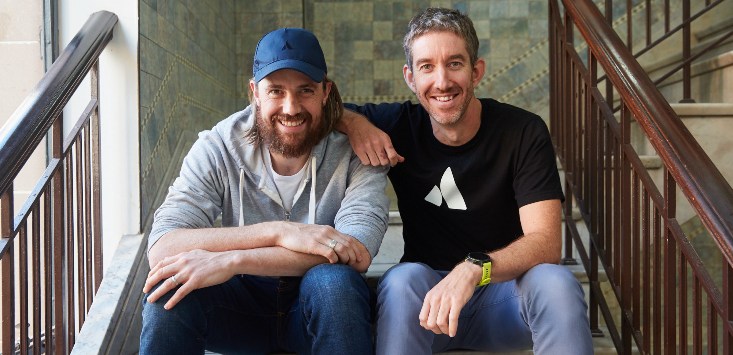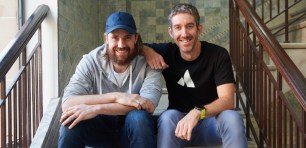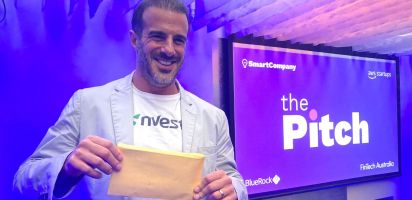
Atlassian founders Mike Cannon-Brookes and Scott Farquhar. Source: supplied.
Tech giant Atlassian has launched a sustainability guide for businesses looking to clean up their act in the name of the environment after a monster research project conducted at more than 100 companies, including Canva and CultureAmp.
It comes after the Australian success story, headed up by influential pair Mike Cannon-Brookes and Scott Farquhar, announced it was running its operations on 100% renewable electricity with the goal of net zero by 2040.
“Businesses have a responsibility to take action against climate change,” Jess Hyman, head of sustainability at Atlassian tells SmartCompany.
“But signing on to a climate goal and checking a tickbox isn’t good enough and stakeholders want to see real commitment and progress.”
Get daily business news.
The latest stories, funding information, and expert advice. Free to sign up.
Hyman says Atlassian’s sustainability team relied heavily on its network and partners early on to help get started, including Salesforce and Workday.
“We believe that through collaboration we can ‘pay it forward’ and help others do the same,” she says.
The corporate guide — which can be downloaded here — charts Atlassian’s efforts to evolve operations and processes in the quest to chase down net zero. It’s split into two parts: “Building our business case for sustainability”, and “Designing Atlassian’s net-zero future”.
The software company engaged nonprofit sustainability consultancy, Business for Social Responsibility, to build its first materiality assessment — a ranking of core issues that impacted policy, global accords, strategy, products, practices, customers, employees, investors, and regulators.
This left the sustainability team with four pillars — “planet, people, customers and community” — which became a series of “We believe” statements, the guide explains. Then it was time to convince the executive team and partners — an Atlassian term for other departments — and gain feedback to secure alignment.
One of the “We believe” statements reads: “Our long-term prospects as a business rely on a functioning planet. Atlassian’s customers, employees, partners, investors, and communities expect us to take an active role in preventing the most disastrous impacts of climate change, and we have an opportunity to lead our industry and customers toward climate action”.
Investor relations, finance, employees and sales and marketing pitched in with their thoughts, with climate-related financial risk, reporting on energy use and emissions data, and procuring renewables among the contributions provided by teams.
Three big lessons arose from this process, the guide says. The first was “lead with the opportunity, not the risks” — where the team realised focussing less on the threat of climate inaction, and more on what Atlassian could gain, convinced the executive team much more effectively.
The second was that grassroots support matters — where the team realised how important it was to get their colleagues on board with the sustainability plan before taking it to the executives for approval. “The people actually doing the work have to be just as invested in the outcome as you are,” the team found.
The third lesson is a good mantra for any person in business regardless of the aspiration: “If it feels uncomfortable, you’re at the right level of ambition”. This learning was “a guiding principle that applies to all facets of our sustainability program: when in doubt, choose the more ambitious route,” the team said.
The guide also provides a series of tools, training and guides for other companies, including The UN Guiding Principles on Business and Human Rights which provides guidelines for companies to prevent, address and remedy human rights abuses committed in business operations.
But Hyman stresses that the sustainability project did not involve a big upfront cash injection: “We started our program with a very small fraction of one person’s time and committing to set an [science-based target] costs nothing”.
“Where businesses should spend their time is working out how their goals integrate with the business strategy,” she continues.
“You can’t apply short-term thinking to climate programs. They need to be embedded in how companies operate. If you figure that out, it’s easier to make the business case for the budget required to drive the transformation.”
Atlassian is no stranger to putting its money where its mouth is on sustainability goals. Its new Sydney headquarters is set to be the world’s tallest “hybrid timber tower” with 50% less emissions in the construction phase.
When asked what the one thing SMEs could do to get the cogs turning on a sustainability push, Hyman says it really comes back to embracing a “model of education,” something she called particularly important for small and medium businesses.
“We run trainings and have well-documented resources that teams can reference whenever needed. This educates our staff on what our climate goals are, how everyone contributes to them, and how to have conversations to set expectations with third parties, which in turn gives employees a feeling of ownership over the outcome of the program,” she says.
“By taking a more self-service model, SMEs can scale quickly without the constant help of a dedicated sustainability team.”
Handpicked for you

The three things great employers have in common according to this Atlassian work futurist




COMMENTS